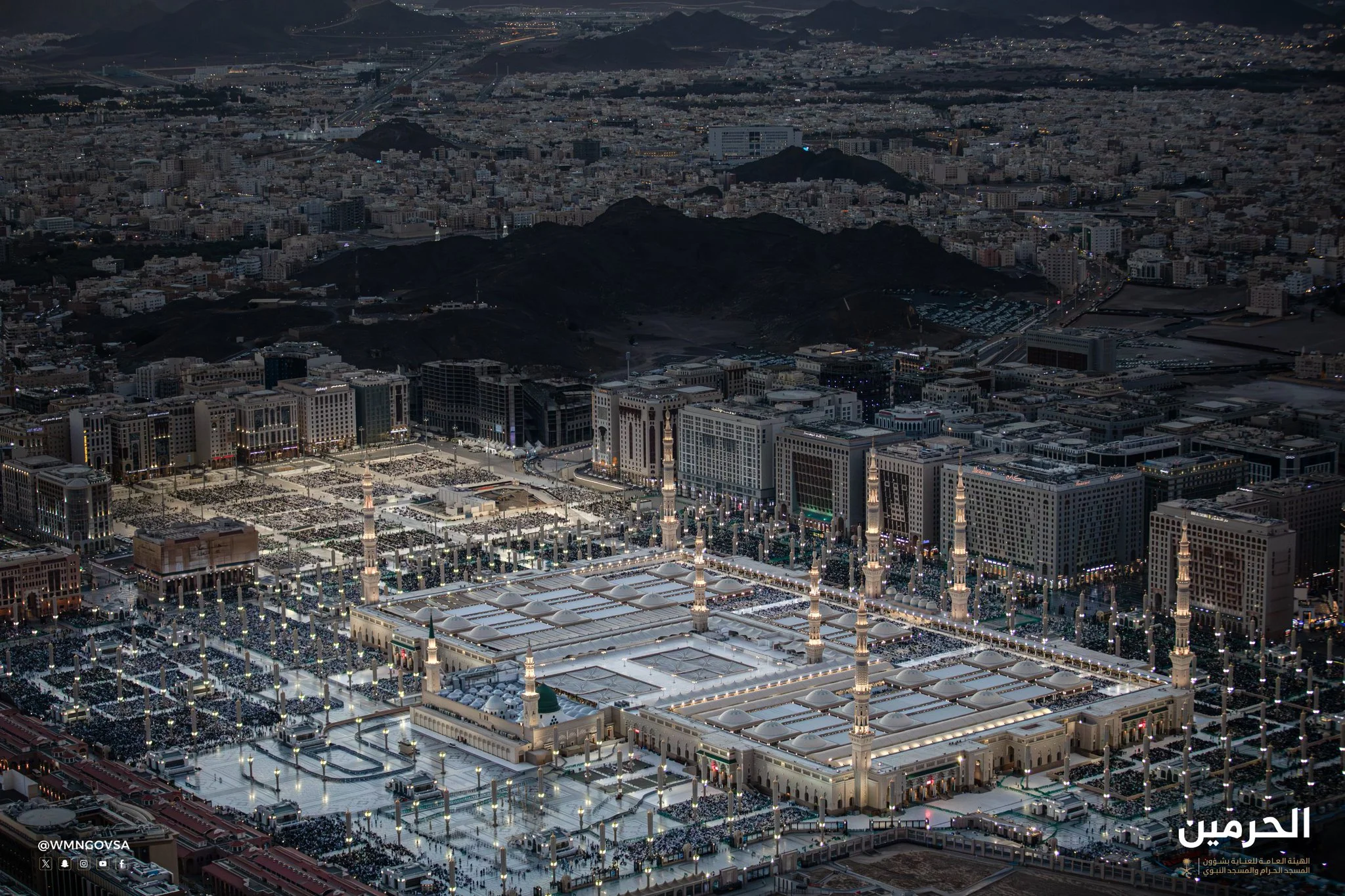
The story of the Prophet’s Mosque began when the Prophet Muhammad (peace and blessings be upon him) set foot in Medina. It has borne witness to the passage of time and the renewal of faith. Constructed in the first year of the Hijrah, the mosque originally spanned 1,050 square meters. It was later expanded by the Prophet after his return from Khaybar in 7 AH, increasing to 1,425 square meters.
Expansions continued under the Rightly Guided Caliphs. During Umar ibn al-Khattab’s reign (may Allah be pleased with him) in 17 AH, the mosque grew by 1,100 square meters. Uthman ibn Affan (may Allah be pleased with him) added 496 square meters in 29-30 AH. Islamic architecture peaked under the Umayyad Caliph Al-Walid ibn Abdul Malik, who expanded the mosque by 2,369 square meters between 88-91 AH. Further efforts persisted during the Abbasid era under Al-Mahdi, and later under Sultan Qaitbay and Sultan Abdul Majid, with hundreds of square meters added in each phase.
With the advent of the Saudi era, the Prophet’s Mosque underwent significant transformations due to the dedicated care of the Kingdom of Saudi Arabia’s leadership. King Abdul Aziz (may Allah have mercy on him) initiated the first major expansion in 1372 AH, adding 6,024 square meters. This journey continued under King Fahd (may Allah have mercy on him), who introduced a landmark expansion in 1405 AH, increasing the mosque’s area to 98,500 square meters, reflecting the Kingdom’s commitment to meeting the needs of worshippers and visitors.

The focus extended beyond space to include aesthetics and infrastructure. Modern shading umbrellas were installed to protect worshippers from the sun, and a central air conditioning system was developed. The historic structure, including the Green Dome and the Prophet’s Mihrab, was restored, blending authenticity with modernity.
Today, the Prophet’s Mosque can accommodate over one million worshippers during peak times, serving as a beacon that unites hearts from across the Islamic world. It stands as a testament to its rich history, the beauty of the present, and a promising future of continued care for this sacred religious landmark.